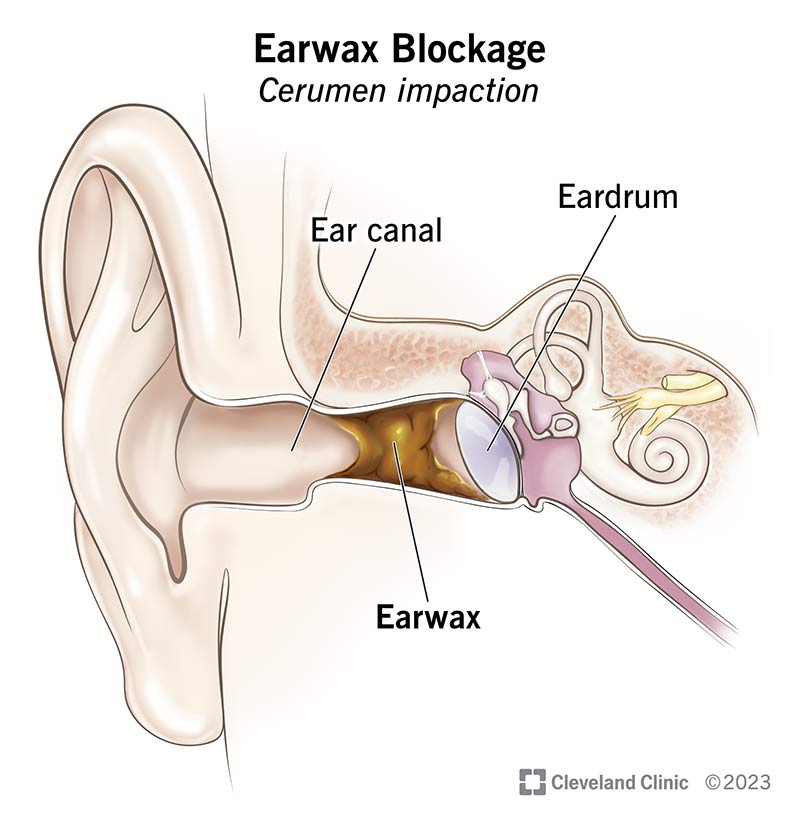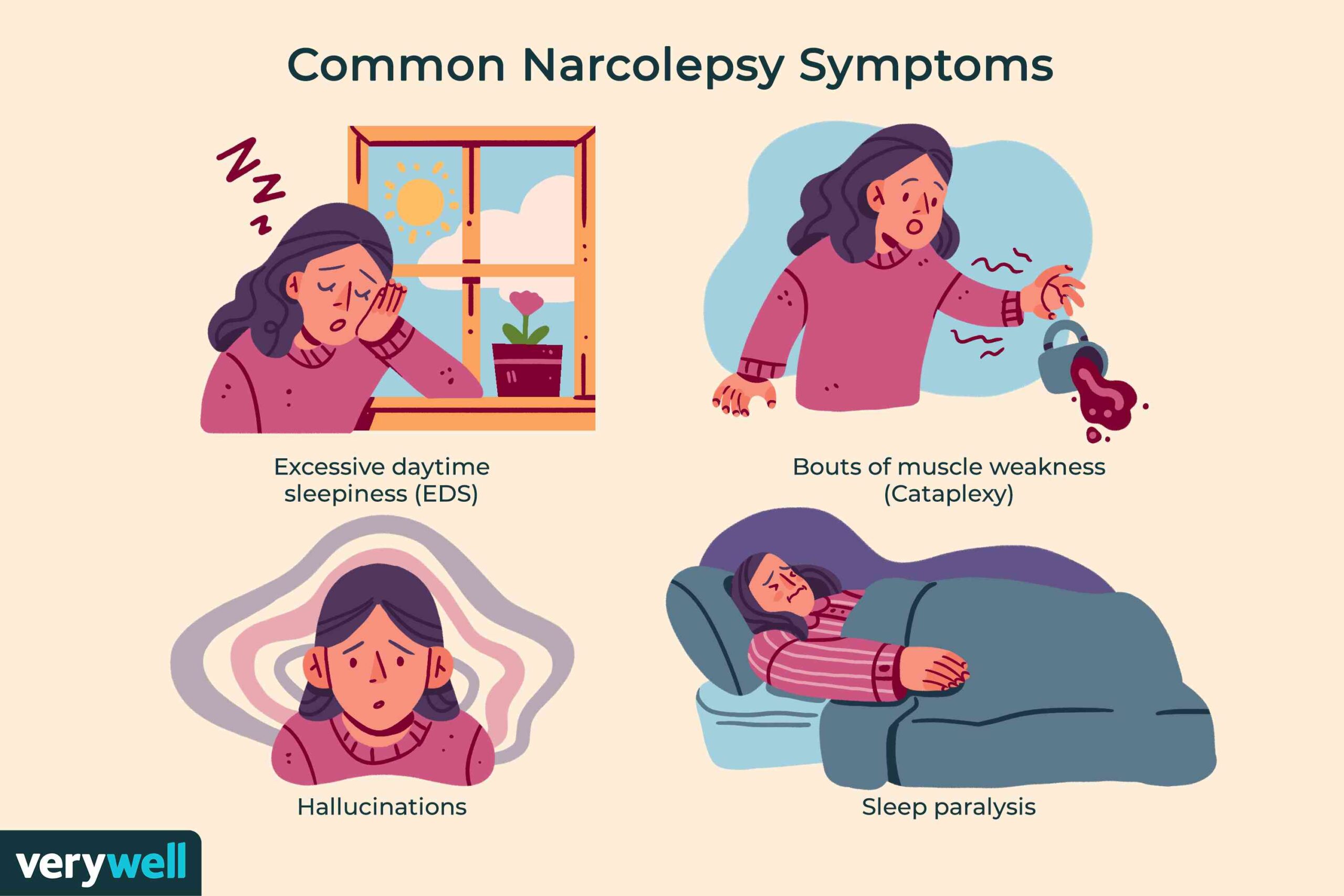How to remove ear wax blockage-various aspects-
Overview
Cross section of ear canal with earwax blockage.
Earwax blockage occurs when earwax (cerumen) accumulates inside your ear canal.
What is cerumen impaction?
“Cerumen impaction” is the clinical term for earwax blockage. Earwax (cerumen) plays a vital role in maintaining ear health. It cleans your ears and shields them from dust, dirt, and infections.
Despite its numerous advantages, earwax can lead to problems if it accumulates too much. Cerumen impaction may cause ear pain, itchiness, ringing in the ears, hearing loss, or other complications. When needed, a healthcare provider can assist you with earwax removal.
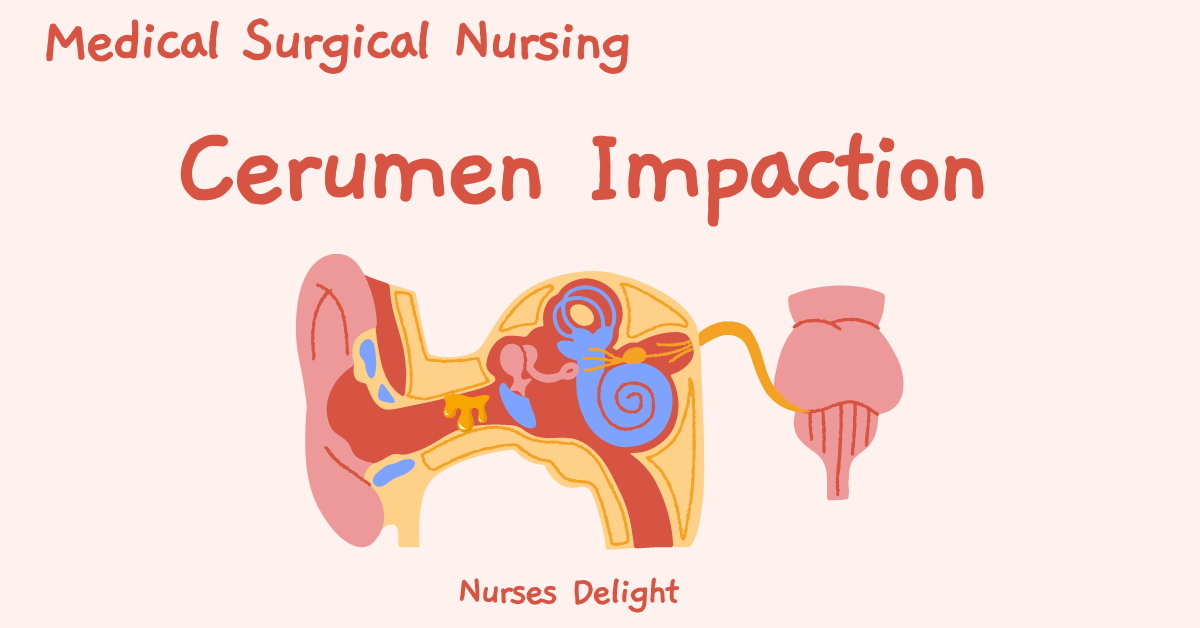

Who is most likely to develop impacted earwax?
Earwax blockage can affect anyone. Approximately 10% of children and 5% of adults experience it.
Impacted cerumen is more prone to occur in individuals who:
- Use hearing aids, earplugs, or earbuds.
- Have significant ear hair.
- Suffer from certain skin conditions like eczema.
- Insert cotton swabs or other objects into their ears.
- Are over the age of 55.
- Have developmental disabilities.
- Possess misshaped ear canals that obstruct natural wax removal.
If Any Patient of ENT Requires Any Surgery, Opd Consultation Or Online Consultation In Clinic of ENT Specialist Doctor Dr. Sagar Rajkuwar ,He May Contact Him At The Following Address-
Prabha ENT Clinic, Plot no 345,Saigram Colony, Opposite Indoline Furniture Ambad Link Road ,Ambad ,1 km From Pathardi Phata Nashik ,422010 ,Maharashtra, India-Dr. Sagar Rajkuwar (MS-ENT), Cell No- 7387590194, 9892596635
Symptoms and Causes
What are the symptoms of cerumen impaction?
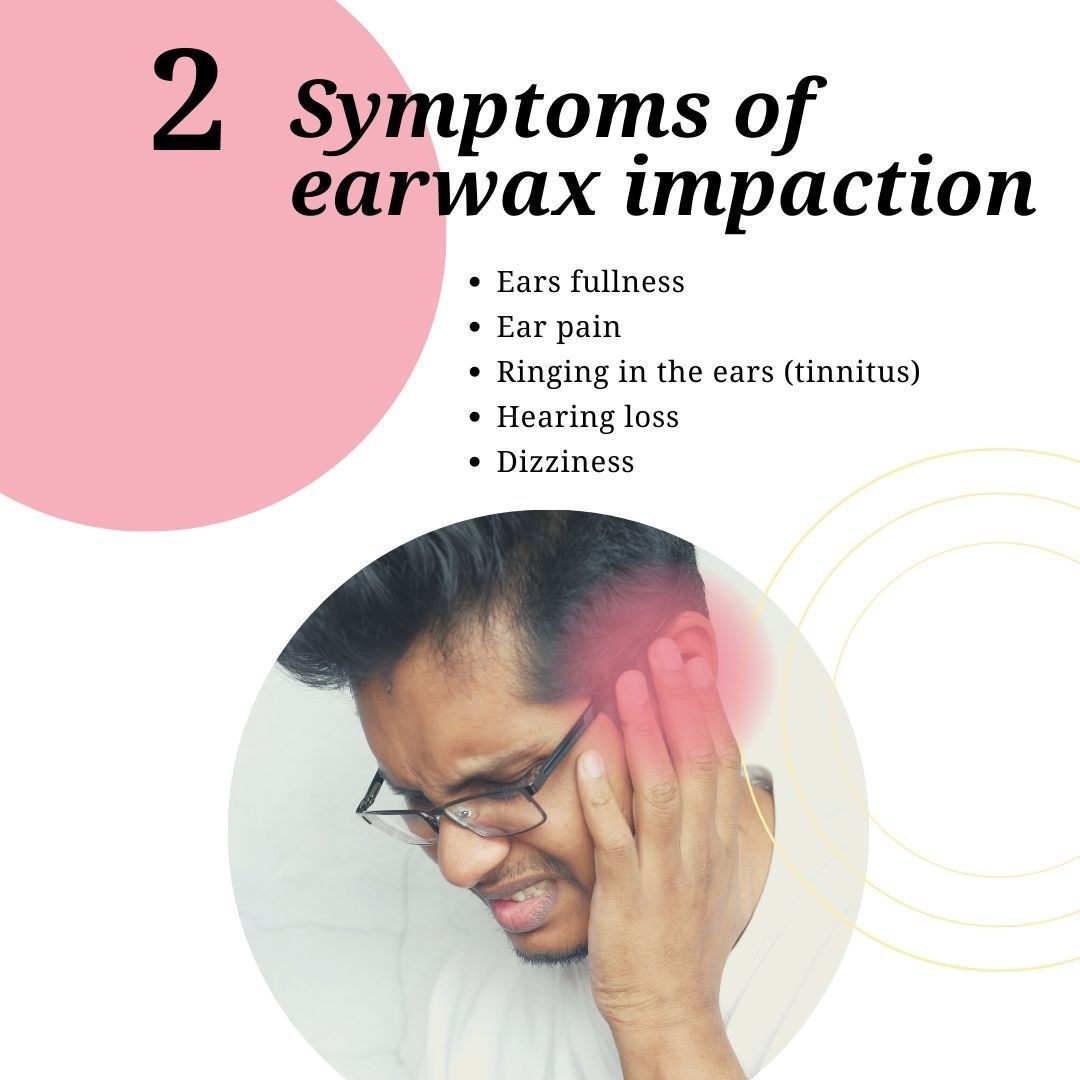

Symptoms of impacted earwax may include:
- A sensation of fullness in your ear.
- Pain in your ear (earache).
- Hearing loss, which might worsen over time.
- Ringing in your ears (tinnitus).
- Itchiness in your ears.
- Discharge or odor from your ears.
- Dizziness.
What causes earwax buildup?
Some individuals experience earwax buildup simply because they produce more earwax naturally.
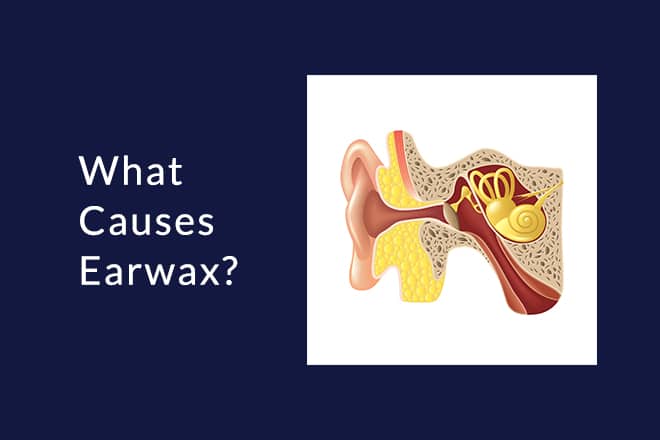

You may also encounter earwax impaction if:
- You have dry or hard earwax.
- You have an abundance of ear hair.
- You have narrow ear canals.
- You regularly wear earplugs or hearing aids.
- You habitually use cotton swabs to clean your ears.
What happens if impacted earwax is not removed?
If not treated, excessive earwax may cause the symptoms of earwax impaction to intensify. These symptoms could involve hearing loss, ear irritation, tinnitus, and other issues. An accumulation of earwax may also hinder visibility into your ear, which could lead to potential problems going undiagnosed.
Diagnosis and Tests
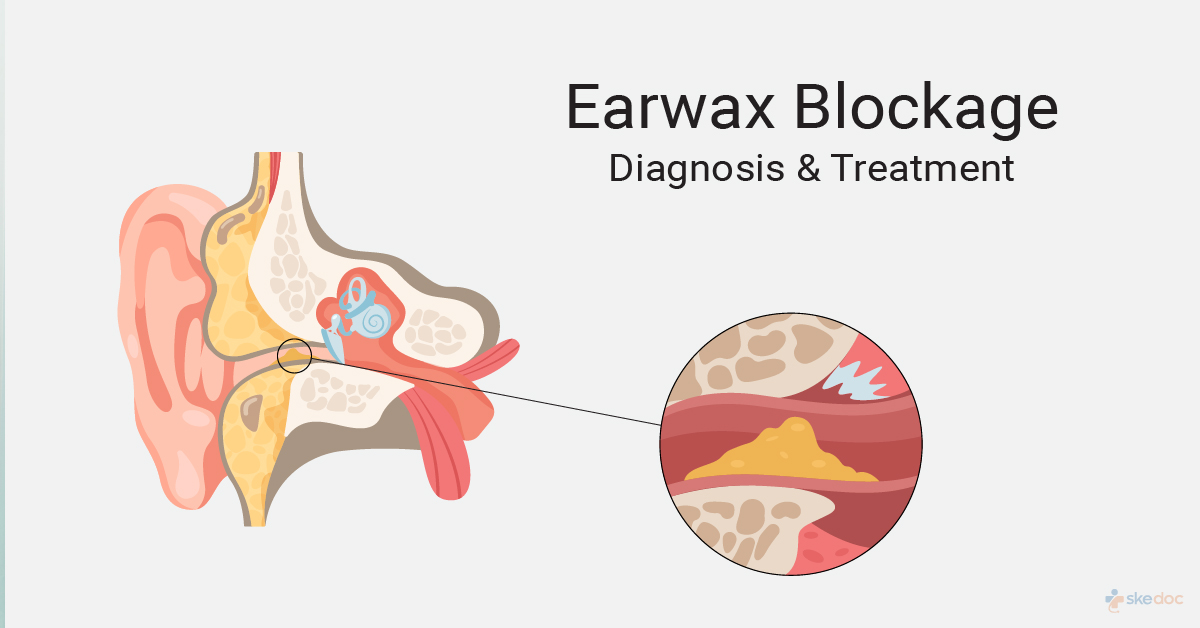

How is cerumen impaction diagnosed?
Your healthcare provider will conduct a physical examination. During this appointment, they will examine your ears using a specific instrument called an otoscope to check for earwax buildup.
To view detailed video on ear cleaning by ENT-Ear ,nose ,throat specialist doctor pl click on the link given below or you can copy paste this link in google search-
Management and Treatment
How do you get rid of impacted earwax?
Treatments for impacted cerumen consist of both home and office techniques, including:
- Solutions that dissolve earwax.
- Ear irrigation.
- In-office earwax removal.
Consult with your healthcare provider before attempting any treatment.
Clean your ears properly
Clean the outer portion of your ear using a washcloth. After showering or bathing, dry your ears as thoroughly as possible.
You should never, under any circumstances, insert anything into your ear canal — including cotton swabs. Using cotton swabs can not only damage your eardrum but also encourage your ears to produce more earwax. (Learn more about why you should avoid cotton swabs in “Additional Common Questions” below. )
Use solutions to dissolve earwax.
You may utilize cerumenolytic solutions (solutions that dissolve wax) in your ear canal. These solutions comprise:
- Saline solution.
- Baby oil.
- Glycerin.
- Mineral oil.
- Hydrogen peroxide or peroxide-based ear drops
When using these solutions, place a few drops into the affected ear and lie down on the opposite side. In this manner, the solution can flow into your affected ear. These oils should be applied sparingly. If you are using an over-the-counter earwax removal product, adhere to the instructions given.
Ear irrigation
Another alternative is to irrigate or syringe your ear. This process entails utilizing a syringe to flush out your ear canal with water or saline solution. Typically, you should initially soften the wax by applying a cerumenolytic solution. Subsequently, you will gently irrigate your ear with a bulb syringe.
In-office earwax removal
Lastly, your healthcare provider is able to extract earwax manually using specific instruments. They may employ a cerumen spoon, forceps, irrigation, or a suction device. Generally, these methods only take a few minutes to finish.
Prevention
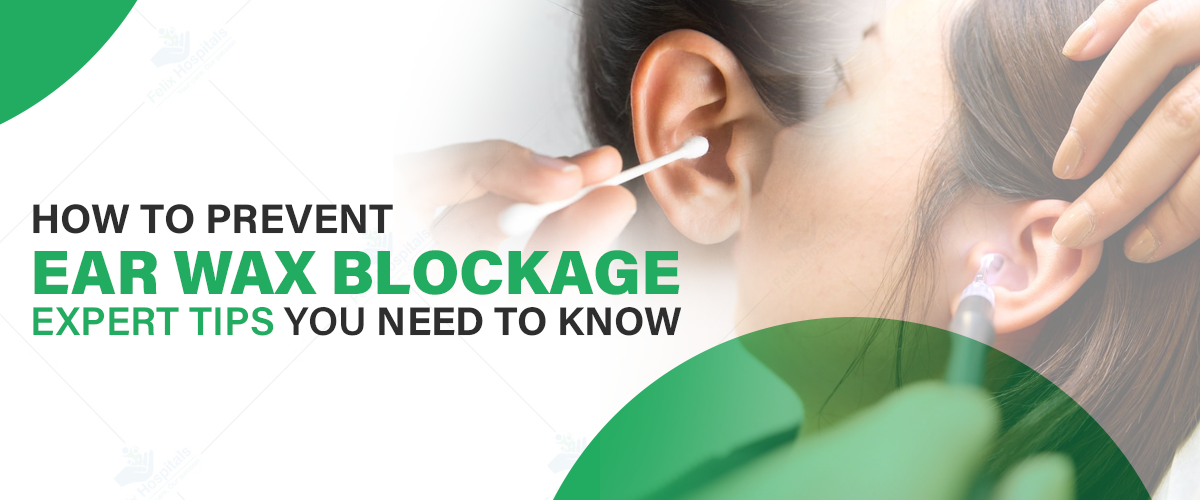

How can I stop earwax accumulation?
Avoid inserting anything into your ears for cleaning. If you utilize cotton swabs, they should be restricted to the outer area of your ear. If a healthcare professional has to extract earwax from your ears more than once annually, inquire what they recommend to prevent earwax from accumulating.
Outlook / Prognosis
What should I anticipate if I experience impacted cerumen?
While impacted cerumen can be bothersome and inconvenient, it typically isn’t harmful. However, you should contact a healthcare professional if you observe symptoms of impacted earwax such as ear pain, dizziness, or hearing loss.
Some individuals produce more earwax than others and may require regular treatments for removal. Discuss with your provider strategies to soften earwax and maintain ear health.
Living With
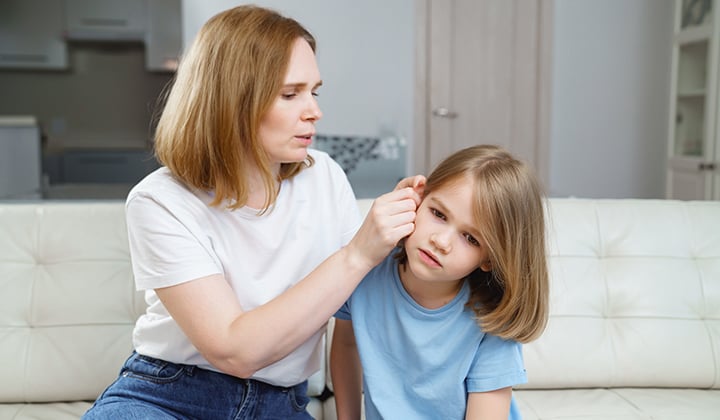

When is it necessary to consult my healthcare provider?
Reach out to a healthcare provider if you exhibit symptoms of cerumen impaction like ear pain, itchiness, tinnitus, dizziness, hearing loss, or a sensation of fullness in your ears.
You should seek immediate medical attention if you experience:
- Fever.
- Persistent earache.
- Discharge from your ear (otorrhea).
- A foul smell emanating from your ear.
What inquiries should I pose to my healthcare provider?
Your healthcare provider can guide you on eliminating earwax buildup. Here are a few inquiries you might consider asking:
- Do my ears produce an excessive amount of earwax?
- What is the safest and most effective way to clean my ears?
- Can I avoid the buildup of earwax?
- What home remedies do you suggest?
- Is professional earwax removal necessary?
- Should I regularly have earwax extracted?
Additional Common Questions
Is it safe to use cotton swabs to eliminate surplus earwax?
Many individuals use cotton swabs for ear cleaning. However, studies indicate that cotton swabs can actually increase earwax production. This occurs because cotton swabs stimulate the delicate hairs within your ear canal. When these hairs are stimulated, they send signals to the glands inside your ear canal to produce more earwax.
What other things should I steer clear of when addressing earwax impaction?
Do not use suction devices intended for home use (like Wax-Vac). They are generally ineffective for most people, and most healthcare professionals do not endorse them.
Ear candles, marketed as a natural method for earwax removal, are ineffective. They can also lead to injuries such as burns to your outer ear and ear canal. They might even perforate (tear) your eardrum.
A note from Prabha Clinic
Keep in mind, earwax itself is not detrimental. It serves to clean your ears and protects them from infections. Nevertheless, if earwax accumulates, it can lead to problems such as irritation, itchiness, and hearing loss. It is safe only to clean the exterior of your ears and to use drops or water for softening earwax. Always consult your healthcare provider to remove earwax using a suitable instrument.
How do you unblock ear wax at home?
To eliminate earwax accumulation:
Rest on your side with the ear in question oriented upward.
Place 2 to 3 drops of olive or almond oil into your ear – avoid almond oil if you’re allergic to almonds.
Remain on your side for 5 to 10 minutes after applying the oil.
Do this 3 to 4 times daily, for 3 to 5 days.
How do I unclog my ear from wax?
Dissolve 1/2 teaspoon of baking soda in 2 ounces of warm water. If you possess a dropper bottle, transfer the solution into it. Lean your head to the side and carefully drop 5 to 10 drops of the solution into your ear, 1 drop at a time. Allow the solution to remain in the ear for as long as 1 hour, then rinse with water.
What dissolves ear wax blockage?
Your healthcare provider can additionally remove the wax by using a syringe that contains warm water and saline or diluted hydrogen peroxide. Prescription ear drops might also be suggested to assist in softening the wax, like carbamide peroxide (Debrox Earwax Removal Kit, Murine Ear Wax Removal System).
How do you remove impacted ear wax?
How is impacted earwax managed?
Medications instilled into the ear canal, to soften the earwax and gradually dissolve it.
Irrigation of the ear canal with water in your provider’s office.
Manual extraction, utilizing specialized instruments in your provider’s office.
How do I remove wax stuck in my ear?
You may also mix hydrogen peroxide with the same amount of room temperature water. Administer 2 drops of the solution, heated to body temperature, in the ear twice daily for a maximum of 5 days. When the wax becomes loose and soft, typically a gentle, warm shower is sufficient to clear it from the ear canal.
Can coconut oil remove ear wax?
Ear drops by themselves frequently eliminate a blockage of wax. Drops can be purchased at drugstores. For instance, sodium bicarbonate or olive oil can be obtained without a prescription. Coconut or almond oil may be utilized as a substitute provided you do not have a nut allergy.
How to open a blocked ear?
If your ears are blocked, attempt swallowing, yawning, or chewing sugarless gum to clear your eustachian tubes. If this does not help, take a deep breath and gently blow out through your nose while pinching your nostrils shut and keeping your mouth closed. If you hear a popping sound, you know you have been successful.
How to massage ear wax out?
Position yourself in a comfortable manner, whether you are sitting or standing. Situate your index and middle fingers behind your earlobe, close to the base of your ear. Use gentle pressure and perform slow, circular movements to assist in loosening the earwax. While you are massaging, incorporate some gentle tugging on your earlobe.
How do you get rid of earwax in 30 seconds?
Soak a cotton ball in the hydrogen peroxide. Tilt your head and let the peroxide drip into your ear. You might hear it fizz as it works to dissolve the earwax. After approximately 30 seconds, let your ear drain onto a washcloth.
Self-care
There are several ear cleaning home treatments available over the market. However, many of these methods, like ear vacuum kits or irrigation, haven’t been thoroughly examined. This implies that they might be ineffective and potentially hazardous.
If you have excessive wax in your ears, the best way to clean them is to visit your healthcare professional. Your healthcare professional can demonstrate safe methods for minimizing wax accumulation at home, such as using ear drops or other earwax-softening substances, if you are susceptible to earwax blockages. Unless a healthcare professional advises them to, people should not use ear drops if they have an ear infection.
Don’t attempt to excavate it.
Never try to remove excessive or hard earwax with common items like cotton swabs, paper clips, or hairpins. Pushing the wax deeper into your ear might seriously harm the lining of your ear canal or eardrum.
Complementary medicine
Some individuals attempt to remove earwax on their own by using a method known as ear candling or ear coning. Ear candling is the practice of putting the unlit end of a hollow, cone-shaped candle into the ear and lighting one end of it. The concept is that the flame’s heat will produce a vacuum seal that pulls wax out of the ear.
However, ear candling is not a recommended remedy for earwax obstruction. Studies have demonstrated that ear candling is ineffective. It might also scorch or harm the ear.
Tea tree oil and garlic oil are examples of essential oils that are not recognized as effective treatments for earwax obstruction. There is no evidence to suggest that they are effective or safe for removing earwax.
Before attempting any alternative methods for earwax removal, consult your healthcare professional.
Home Treatments for Earwax Removal
Although some home treatments, like irrigation, might help reduce accumulation, you generally don’t need to remove earwax. Earwax removal can have negative effects, such as injury to the ear canal.
Cerumen, often known as earwax, is produced in our ear canals. Usually, its presence is healthy and natural. Earwax buildup, on the other hand, can be unpleasant, unsightly, and, in some cases, cause temporary hearing loss.
Although there are over-the-counter solutions for earwax drainage, many common household items may also be used to remove excess wax from the outer ear canals.


Do you need to clean your ears?
Most of the 206 college students in a 2018 study participated in ear-cleaning activities, with 75% of them thinking it was good for their health.
The truth, though, is that you don’t need to remove earwax from your ears. Earwax isn’t grime. Earwax serves a vital purpose by protecting and moisturizing your ears. Its antibacterial properties even reduce the likelihood of getting an ear infection.
The risks of earwax removal may outweigh its potential benefits. Using a cotton bud to remove earwax might irritate or harm the ear canal or perhaps perforate the eardrums.
Using an instrument to remove visible earwax can also increase the risk of pushing the earwax deeper into your ears. This might lead to earwax impaction (blockages) over time.
Earwax removal home cures
If you have any of the following conditions, you should avoid trying to remove earwax:
- tinnitus
- ear operation
- a middle ear infection
- an eardrum that has been perforated
- any additional ear issues
In these situations, you should see your physician for help removing earwax.
Additionally, if you feel any pain or discomfort at any time during any of these procedures, stop immediately and contact your physician.
Sodium bicarbonate
Baking soda may be used at home to remove earwax:
- In 2 ounces of warm water, dissolve 1/2 teaspoon of baking soda.
- If you have a dropper bottle, pour the solution into it.
- Head to the side and drop 5 to 10 drops of the solution into your ear, one at a time.
- After allowing the solution to sit in the ear for up to an hour, rinse with water. Continue doing this once daily until the earwax is cleared.
- It could occur in a matter of days. Do not extend this for more than two weeks.
How to Use Hydrogen Peroxide to Remove Earwax
Three percent hydrogen peroxide or a 50-50 combination of hydrogen peroxide and water can be used at home to remove earwax.
- Tilt your head to the side and insert 5 to 10 drops of hydrogen peroxide into your ear.
- To allow the peroxide to penetrate the wax, keep your head tilted for five minutes.
- Perform this once daily for three to fourteen days.
- It transforms into water once the hydrogen peroxide bubbles. You can softly rinse the ear canal with alcohol to remove the water, dry up the moisture, and inhibit bacterial growth.
Use oil to soften earwax obstructions.
Earwax is an oily substance. As a result, certain oils might aid in softening earwax when they come into contact with it. Proponents of this approach suggest the following oils:
- baby oil
- coconut oil
- glycerin
- mineral oil
- olive oil
Using oil to remove earwax:
- If you like, heat your chosen oil ever so little, and then pour it into a dropper bottle. Do not heat the oil in the microwave. Before putting it in your ear, always verify the temperature.
- Administer a few drops of oil into your ear while tilting your head to the side.
- Keep your head tilted to the side for five minutes.
- Perform this procedure once or twice daily.
Irrigation
Sometimes, gently flushing water can help remove earwax:
- Get a gentle rubber bulb syringe made for ear cleaning and fill it with warm water.
- Place a thick towel or basin under the ear and tilt your head to the side.
- To deliver the warm water into your ear, softly squeeze the bulb.
- Allow the water to drain onto the towel or basin.
- You may even do this over a bowl to see if any earwax particles are visible.
- Any of the aforementioned approaches can be used in conjunction with irrigation. Irrigate 5 to 15 minutes after applying hydrogen peroxide, baking soda, or oil.
Pediatricians found in a little study of 38 children that earwax could be removed just as effectively, if not more so, by irrigating the ears in a clinical setting as by using a metal instrument.
Home treatments that might be harmful to steer clear of
Although it is usually alright to remove earwax at home, some circumstances call for a doctor’s assistance. Contact your physician if the home treatments mentioned above are ineffective.
The following items should not be used to remove earwax:
Avoid using tiny items such as pen caps or bobby pins to clean your ears. The traditional saying, “Never put anything in your ear that is smaller than your elbow,” is supported by many physicians.
Cotton swabs: Cotton swabs seem harmless and suitable for your ears, but they are actually too tiny to be used safely inside the ear and might cause injury.
Ear candles: Despite the fact that this procedure has gained a lot of popularity, there are concerns that it could cause harm, such as punctured eardrums and burns.
Takeaway
If you think you have a problem with earwax, you should see a doctor first. They can determine if it’s a condition that needs to be treated, a symptom of a deeper problem, or something your body can handle on its own.
Excessive forcefulness in ear wax removal might occasionally result in hearing issues. You might also experience itching, pain, or an increased risk of infections in your ear canals.
When discussing your issues with your doctor, think about discussing at-home treatment alternatives to see whether they are suitable for your situation.
Your doctor may also recommend seeing a specialist in ears, noses, and throats (ENT).
FOR INFORMATION IN GREAT DETAIL ON How can I remove ear wax at home? PL CLICK ON THE LINK GIVEN BELOW-It Is Always Better To View Links From Laptop/Desktop Rather Than Mobile Phone As They May Not Be Seen From Mobile Phone. ,In Case Of Technical Difficulties You Need To Copy Paste This Link In Google Search. In Case If You Are Viewing This Blog From Mobile Phone You Need To Click On The Three Dots On The Right Upper Corner Of Your Mobile Screen And ENABLE DESKTOP VERSION.
FOR INFORMATION IN GREAT DETAIL ON Foods that cause ear wax PL CLICK ON THE LINK GIVEN BELOW-It Is Always Better To View Links From Laptop/Desktop Rather Than Mobile Phone As They May Not Be Seen From Mobile Phone. ,In Case Of Technical Difficulties You Need To Copy Paste This Link In Google Search. In Case If You Are Viewing This Blog From Mobile Phone You Need To Click On The Three Dots On The Right Upper Corner Of Your Mobile Screen And ENABLE DESKTOP VERSION.
FOR INFORMATION IN GREAT DETAIL ON Ear Wax Cleaning Machine PL CLICK ON THE LINK GIVEN BELOW-It Is Always Better To View Links From Laptop/Desktop Rather Than Mobile Phone As They May Not Be Seen From Mobile Phone. ,In Case Of Technical Difficulties You Need To Copy Paste This Link In Google Search. In Case If You Are Viewing This Blog From Mobile Phone You Need To Click On The Three Dots On The Right Upper Corner Of Your Mobile Screen And ENABLE DESKTOP VERSION.
FOR INFORMATION IN GREAT DETAIL ON Ear Wax Removal Near Me PL CLICK ON THE LINK GIVEN BELOW-It Is Always Better To View Links From Laptop/Desktop Rather Than Mobile Phone As They May Not Be Seen From Mobile Phone. ,In Case Of Technical Difficulties You Need To Copy Paste This Link In Google Search. In Case If You Are Viewing This Blog From Mobile Phone You Need To Click On The Three Dots On The Right Upper Corner Of Your Mobile Screen And ENABLE DESKTOP VERSION.
FOR INFORMATION IN GREAT DETAIL ON Ear Wax Cleaning Kit PL CLICK ON THE LINK GIVEN BELOW-It Is Always Better To View Links From Laptop/Desktop Rather Than Mobile Phone As They May Not Be Seen From Mobile Phone. ,In Case Of Technical Difficulties You Need To Copy Paste This Link In Google Search. In Case If You Are Viewing This Blog From Mobile Phone You Need To Click On The Three Dots On The Right Upper Corner Of Your Mobile Screen And ENABLE DESKTOP VERSION.
FOR INFORMATION IN GREAT DETAIL ON About Wax-Off (Advance) Ear Drops PL CLICK ON THE LINK GIVEN BELOW-It Is Always Better To View Links From Laptop/Desktop Rather Than Mobile Phone As They May Not Be Seen From Mobile Phone. ,In Case Of Technical Difficulties You Need To Copy Paste This Link In Google Search. In Case If You Are Viewing This Blog From Mobile Phone You Need To Click On The Three Dots On The Right Upper Corner Of Your Mobile Screen And ENABLE DESKTOP VERSION.
If Any Patient of ENT Requires Any Surgery, Opd Consultation Or Online Consultation In Clinic of ENT Specialist Doctor Dr. Sagar Rajkuwar ,He May Contact Him At The Following Address-
Prabha ENT Clinic, Plot no 345,Saigram Colony, Opposite Indoline Furniture Ambad Link Road ,Ambad ,1 km From Pathardi Phata Nashik ,422010 ,Maharashtra, India-Dr. Sagar Rajkuwar (MS-ENT), Cell No- 7387590194, 9892596635
Issued in public interest by –
www.entspecialistinnashik.com
for related youtube video on this topic please click on the link given below-
Have you heard everything? Here is some guidance on how to get rid of ear wax
It’s frequently best to ignore earwax since some of it is beneficial for your ears. Also, you might only need a few drops of water to clear a blockage.
Despite being a bodily secretion that the majority of us would prefer to avoid, earwax is actually rather helpful in modest doses. Because it travels from the inside out, collecting debris, hair, and grime along the route, it is a natural cleanser. It has been proven to possess antibacterial and antifungal characteristics through testing. Your ears are probably going to itch and feel uncomfortable if they don’t have enough earwax.
An overabundance of earwax can have negative consequences.
However, earwax is clearly excessive for many individuals. Earaches, infections, and other issues can result from earwax blocking the ear canal. By stimulating the branch of the vagus nerve that innervates the outer ear, earwax can induce coughing if it becomes lodged in a specific manner. Furthermore, as one may expect, an excessive accumulation of earwax can cause some hearing impairment.
The American Academy of Otolaryngology–Head and Neck Surgery’s guidelines emphasize a let-it-be approach to earwax and advise against its removal unless it’s causing a problem. Sometimes, of course, it’s hard to determine if the wax is the cause of an issue without taking it off and seeing if the issue disappears.
The formation of earwax
Cerumen (pronounced seh-ROO-men) is the medical word for earwax; it is derived from the Latin word cera, meaning wax. The outer ear canal’s walls include a combination of sweat glands and sebaceous glands that release fatty secretions (see picture). The secretions are driven via the canal to the ear opening by jaw movements during chewing or speaking, where they dry up and flake off harmlessly.


It’s more probable that earwax will cause a blockage if it collects a lot of dirt or stays in the ear canal for an extended period of time since it can become hard and dry. The hard earwax that might result from eczema and other disorders that cause excessively dry, flaky skin is another example. In addition, the consistency of glandular secretions varies with age, making it more difficult for them to pass through the ear canal.
Certain individuals are just born with drier earwax, which may be more prone to clumping. East Asians, for example, are more likely to have dry earwax.
Advice on getting rid of earwax
A blockade can be removed by medical intervention; The most frequent otolaryngological operation carried out in American primary care facilities is the removal of earwax.
Alternatively, you might choose to do it yourself. Many individuals make the mistake of attempting to use a cotton swab to remove the wax, which often causes the earwax to be pushed back into the ear. Instead, tilt your head so that the opening of your ear is facing upward, then use a cotton ball to soak up a few drops of water, a simple saline solution, or hydrogen peroxide before gently dripping it into your ear. Let gravity pull the liquid through the wax while maintaining that posture for a minute. After that, tilt the head in the opposite direction to allow the wax and liquid to drain out. A bulb syringe can also be used to rinse the ear.
Earwax develops in the outer third of the ear canal or in some sections of it, but not close to the eardrum. As a result, failed removal efforts frequently lead to a build-up that presses against the eardrum.
Over-the-counter ear drops that dissolve earwax are available. The water-based ones include substances like sodium bicarbonate, hydrogen peroxide, and acetic acid. Oil-based products lubricate and soften the earwax. Studies have not established that any one kind is superior to the others. The eardrops will occasionally function by themselves. Sometimes, a bulb syringe is needed to spray some water. A bulb syringe should never be used by someone with a perforated eardrum. A severe infection might occur if water enters the middle ear.
With more knowledge and a better perspective, a clinician approaches an earwax obstruction in much the same manner as a do-it-yourselfer. Clinicians also have much better equipment for physically extracting earwax, such as thin, spoon-shaped curettes that can fit inside the ear canal’s limited space.
For important health related topics please click on our facebook page link given below or copy paste this link into google search –
https://www.facebook.com/positivemind.healthcare
For important health related videos please click on the link of our youtube channel given below or copy paste this link into google search-
http://www.youtube.com/@healthuseful8539/
Pay attention, hearing aid users!
Additionally, hearing aids can encourage the glands in the ear canal to release more secretions, as they prevent the natural movement of earwax out of the ear. According to some estimates, earwax causes between 60% and 70% of the hearing aids that are submitted for repair. The acidity breaks down the components as it enters vents and receivers. If you use a hearing aid, ask your primary care physician to check for earwax accumulation.


